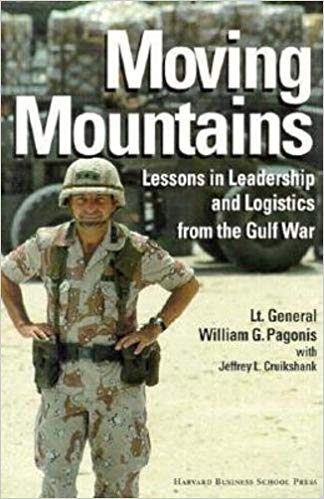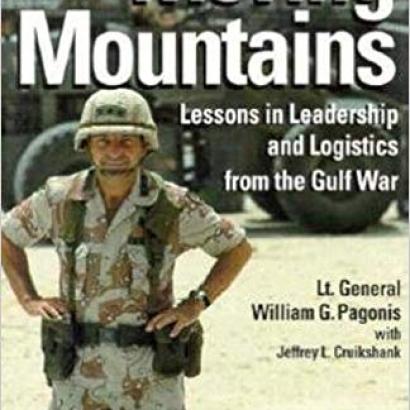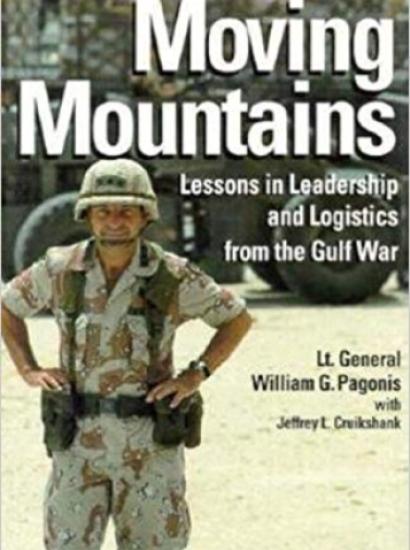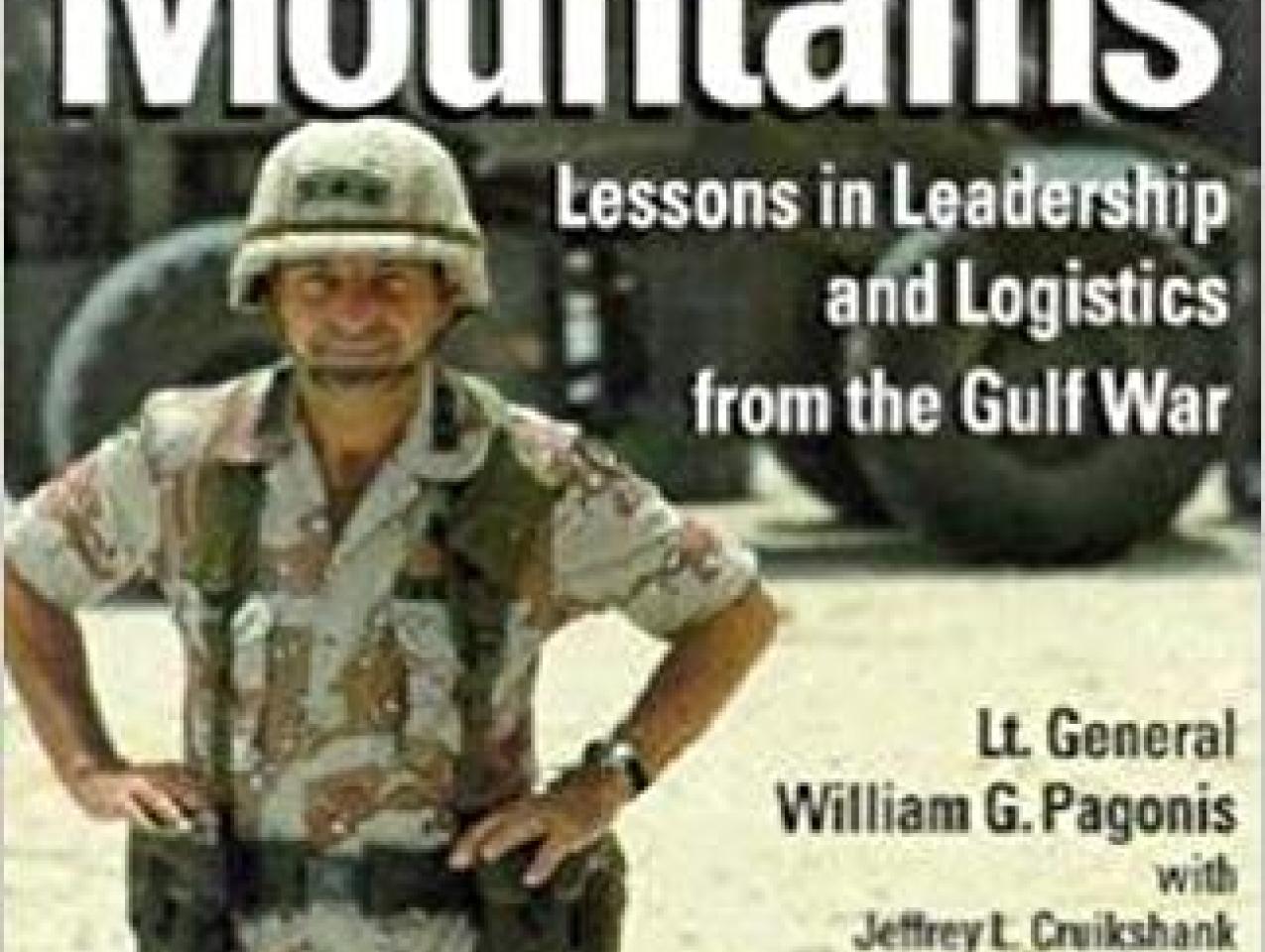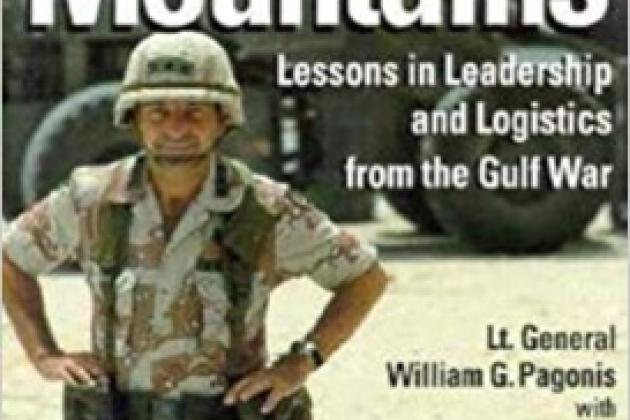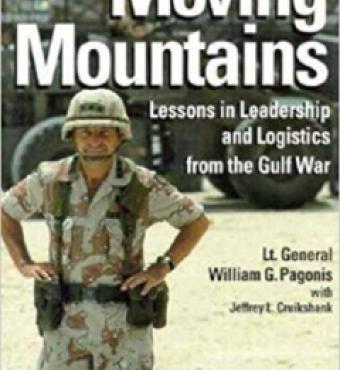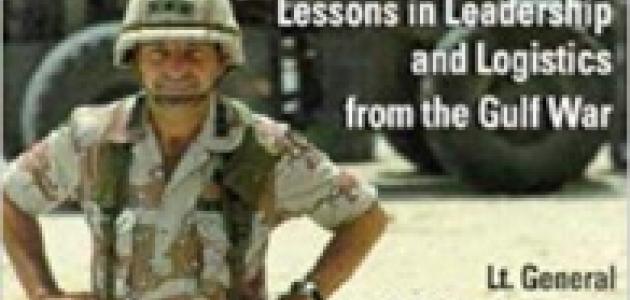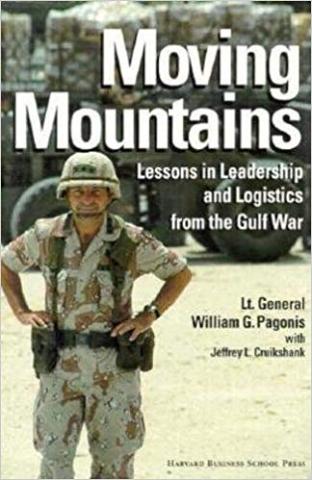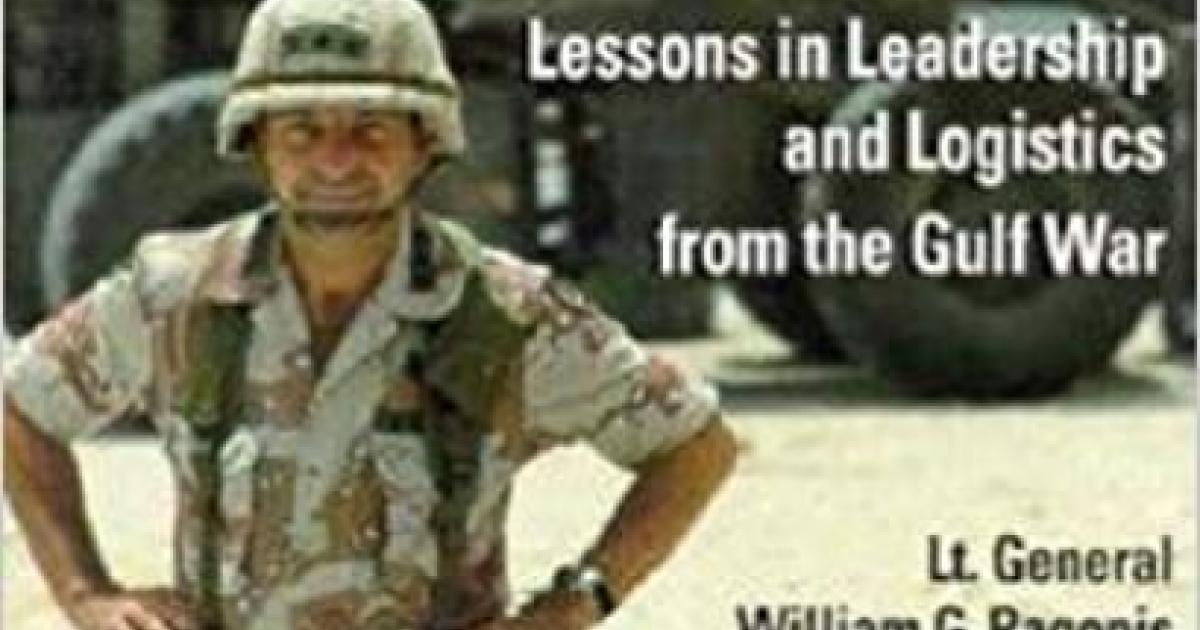- History
- Military
Consider the 3x5 card. In all the video and still images of the Gulf War—lines of tanks and armored personnel carriers stretching to the dusty horizon, ships unloading supplies and ordnance, aircraft delivering a weeks-long bombardment before the ground invasion—there was no sign of what the author calls the “humble little cards” that played a crucial role in the logistics operations that underpinned the planning and execution of the conflict and the post-combat redeployment.
Personnel of all ranks created nearly 1,000 such 3x5 cards each day, Pagonis writes, and 60 to 100 reached him in a steady, day-long stream. His replies were returned by courier, written in green ink reserved for the Major General whom United States Central Command commander General Norman Schwarzkopf Jr. plucked from a U.S. headquarters post to plan the logistics effort of the campaign and then lead it on the ground. “When the system saw a card with green ink, the system knew the problem had gotten to my desk,” Pagonis writes.
Pagonis faced plenty of problems. Amidst the urgency to establish facilities and systems to support an army in the desert—Pagonis and his staff referred to the first phase as “survival”—Pagonis first had to build a team of logisticians. He and three staff were initially deployed as host country consultants, dealing with the need to build basic infrastructure for food, water, shelter, and sanitation, while creating an organization that could manage problems ranging from the design, production, and delivery of new boots—the boot with a metal plate in the sole that had been designed to protect soldiers in Vietnam from mines promised to be a major problem in the desert heat—to recruiting several hundred civilian volunteers to set up shop in a port in Saudi Arabia to retrofit tanks equipped with 105mm guns with new 120mm guns.
A rapid deployment of combat forces to the region was part of the strategy to deter further Iraqi aggression while the foundation was laid for the end-run around the Iraqi’s western flank that ultimately brought the Gulf War to a speedy end. The operation has been likened to relocating the city of Richmond, Virginia. On short notice.
Moving between units and up and down the chain of command, the 3x5 cards reinforced the leadership approach that Pagonis employed to mount one of the largest military deployments in U.S. history. All told, the U.S. deployed 550,000 troops, and shipped 7 million tons of supplies, processed more than 12,500 aircraft and delivered 32,000 tons of mail during the three phases of the operation, Desert Shield, Desert Storm, and Desert Farewell.
The 3x5 cards kept things moving by creating a physical reminder of a problem requiring attention. While there was email at the time, and there have been significant advances in electronic communications systems and devices since the Gulf War, core principles remain, regardless of the available technology. Pagonis contends the index cards reinforced the idea of teamwork and underscored the value of open communication. A logistics problem that is conveyed on a 3x5 card “is less of a solo manifesto and more of a group solution,” he writes. “I believe messages that are transmitted verbally, or from screen to screen, are too ephemeral to be effective.” An index card doesn’t go away, and “as it moves around, it physically nudges people into action.”
One of the best aspects of the 3x5 system, Pagonis says, is the elimination of lengthy papers. “It is amazing how all the information needed by a decision maker can be placed on a 3x5 card,” he writes. The lesson: if you can’t fit the information you need to convey to a decision-maker on a 3x5 card, you’re probably telling them too much. A physical limitation on space also forces writers to get to the point—and reduces the propensity to re-write analyses, proposals, and other documents as they make their way to the right decision maker. Pagonis makes an observation that indicates a practical familiarity with the tendency to try to shape the ultimate presentation of a problem and its possible solutions: “bad news doesn’t get better with time.”
Could Desert Storm be planned and executed today? It’s more than an academic question. The current U.S. National Defense Strategy tasks the U.S. military with fielding a force capable of projecting a credible deterrent to peer or near-peer adversaries in a world of great power competition. But a significant portion of U.S. capability is focused on the Middle East and Afghanistan. Some military logisticians warn that the rise of near-peer competitors means the U.S. would not be able to move personnel and materials on the same scale—and at the same pace—as was done during Desert Storm. For the first time in about 30 years, U.S. adversaries will have a vote, so to speak, in the planning and execution of U.S. efforts to project power.
Building the logistical capabilities to deploy, supply, and sustain U.S. forces is the next mountain that U.S. policymakers, along with civilian and uniformed leadership in the military, will need to move in order to secure U.S. national security. It’s a worthwhile effort to study the classics, Pagonis contends: “our side knew more about Alexander the Great’s approach to logistics, and also about his principles of leadership, than Saddam Hussein’s lieutenants did. We benefitted; Saddam and the Iraqi army did not.”
This volume is a good place to start such a study.







